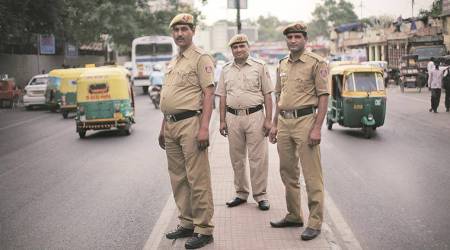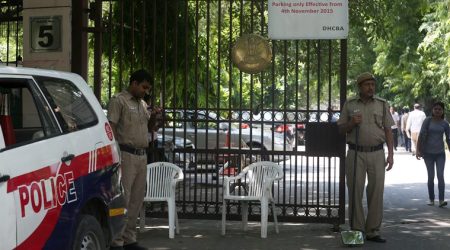 Malkhana at GTB Enclave police station. Instead of shelves, files are kept in cartons, locked in almirahs. (Source: Express photo by Prem Nath Pandey)
Malkhana at GTB Enclave police station. Instead of shelves, files are kept in cartons, locked in almirahs. (Source: Express photo by Prem Nath Pandey)
Things have changed for head constable Murari Lal (45) — the malkhana in-charge of GTB Enclave police station — after the set-up was digitised, with QR codes now being used to manage and organise case properties seized during investigation.
The station is one of three model stations where digitised malkhanas have become operational. Police Commissioner Amulya Patnaik has now directed all DCPs to introduce the same in every police station.
Earlier, Lal would check each court summon that would come during the day, at night. Till about a year ago, even getting leaves was difficult. “But now, Lal’s substitute officer does not have to struggle while searching for case property,” a senior police officer said.
Each station has a malkhana, or a store room, to preserve “case properties” or evidence till the case is disposed of in court.
Hareshwar Vishwanathappa Swami, a 2013 batch IPS officer, is the brain behind taking malkhanas down a digital road. “I was working as the SHO (at Keshavpuram police station) during my training tenure, and I had to work throughout the night to look for information regarding a High Court order. That night, I realised how much we all had to struggle to check old data,” he said.
During his training tenure, Hareshwar started meeting people, especially technical engineers, to discuss an alternative. “I did the paperwork after meeting engineers… In between, I was posted as an assistant commissioner of police at Seemapuri sub-division. The malkhanas of all the police stations were loaded with case properties and shelves were marked year-wise, with the most recent seizures at the front. Months after joining, I shared my idea with my seniors and they supported me. I picked three police personnel for help,” he said.
Hareshwar said they initially struggled, but kept meeting software developers to come up with a system where, to look for a case property, one only had to enter the FIR number, the investigating officer’s name, and use a QR code. “There were case properties in all the shelves, but we cleaned those and received training from a private courier company on how to pack case property in cartons. We then put QR code slips on all the cartons as per their size, and put them inside our almirahs,” said sub-inspector Rakesh Malik, who was picked by ACP Hareshwar.
For all the latest Delhi News, download Indian Express App






























